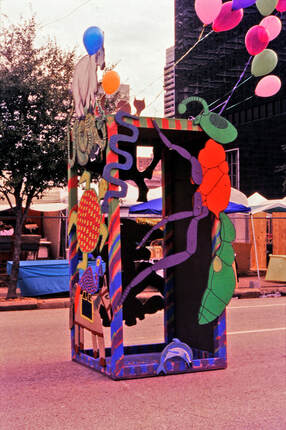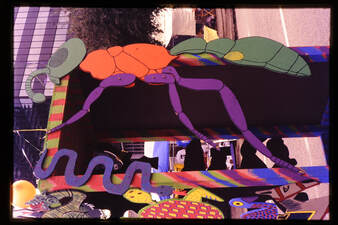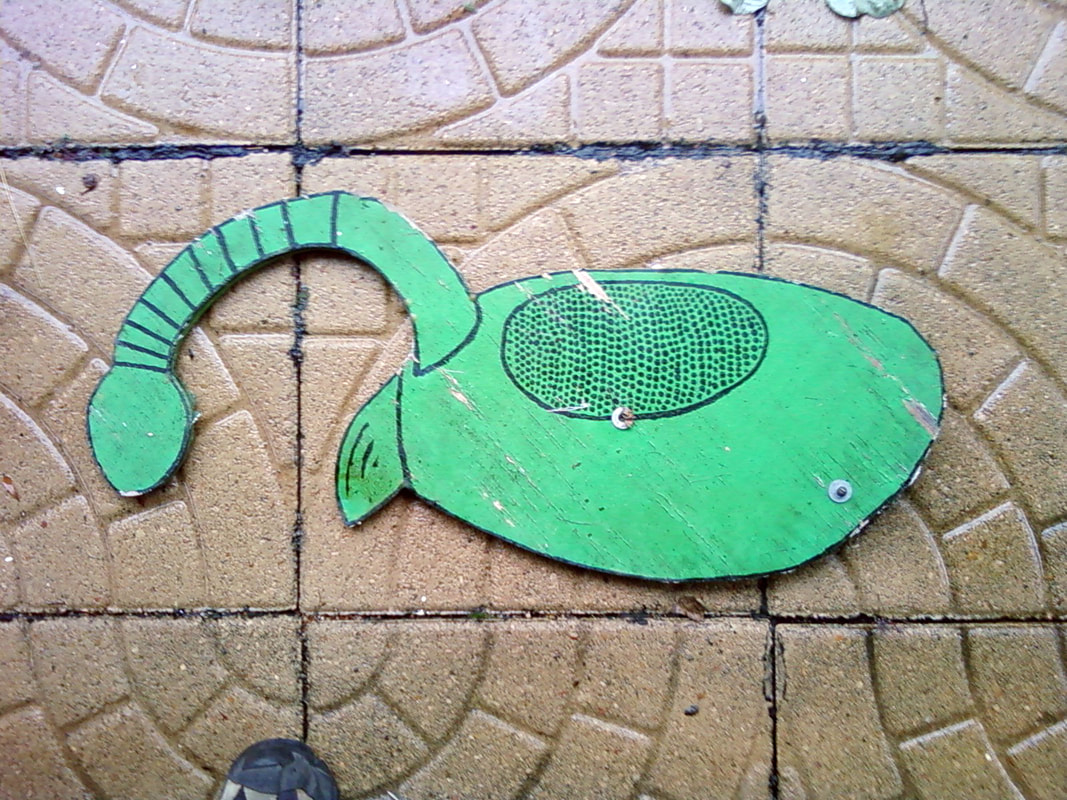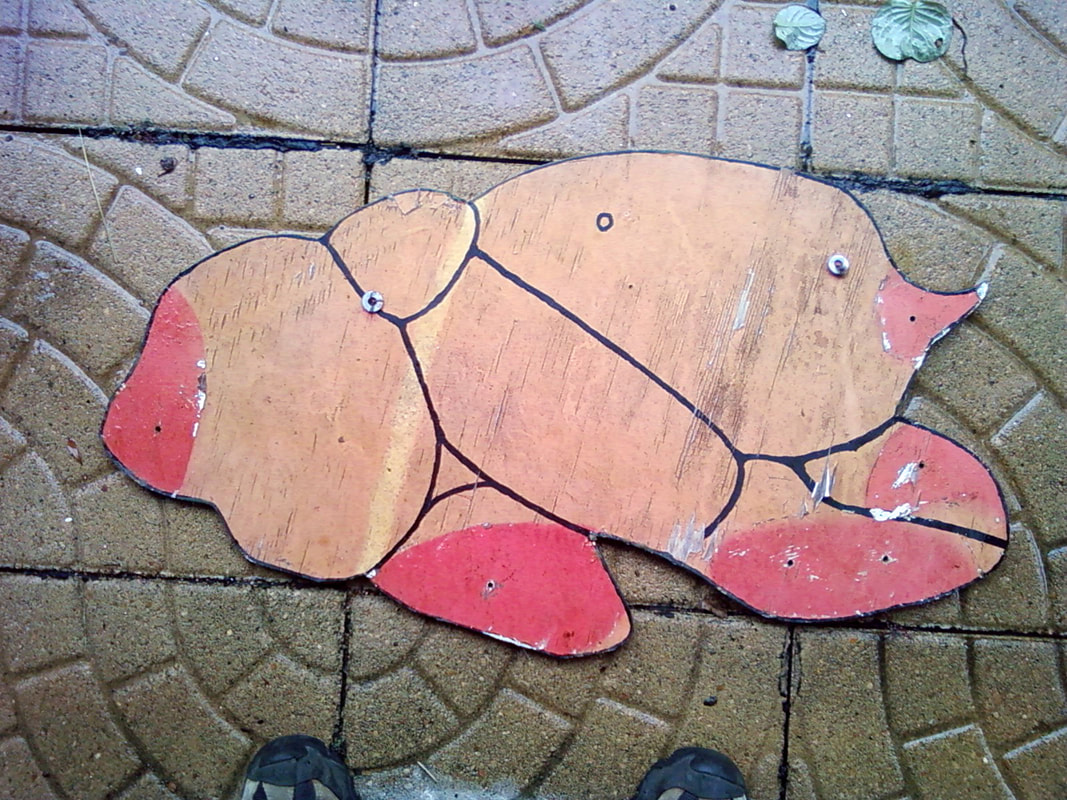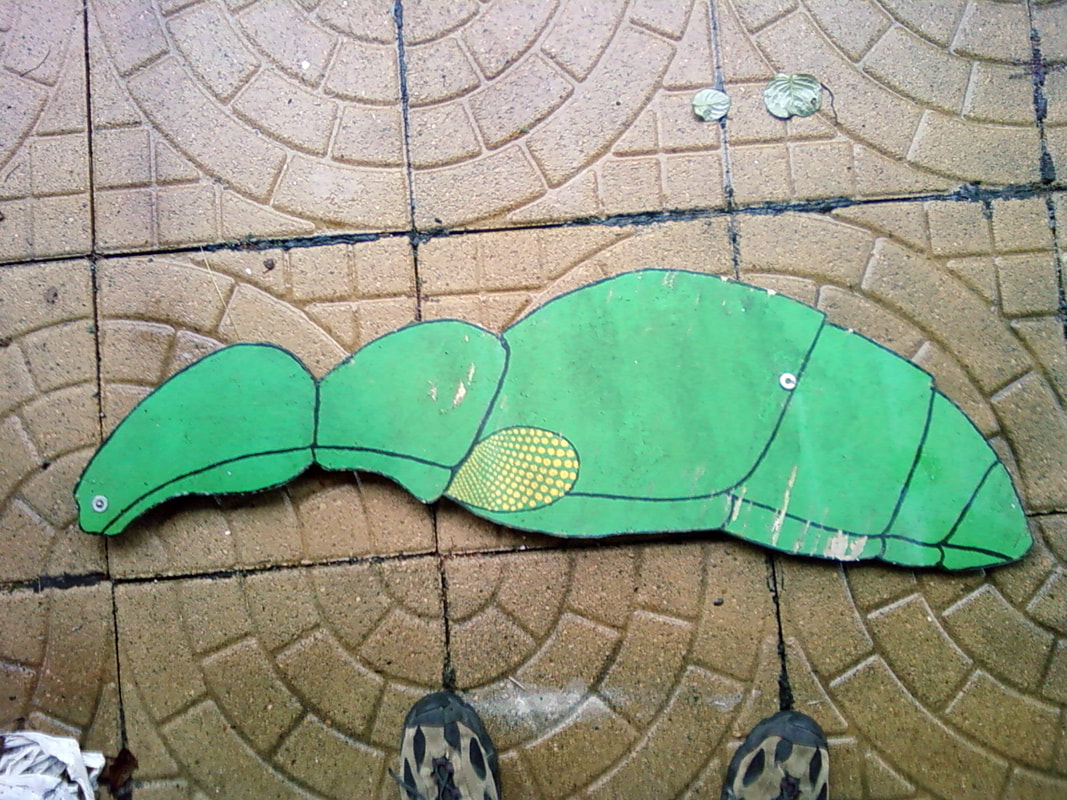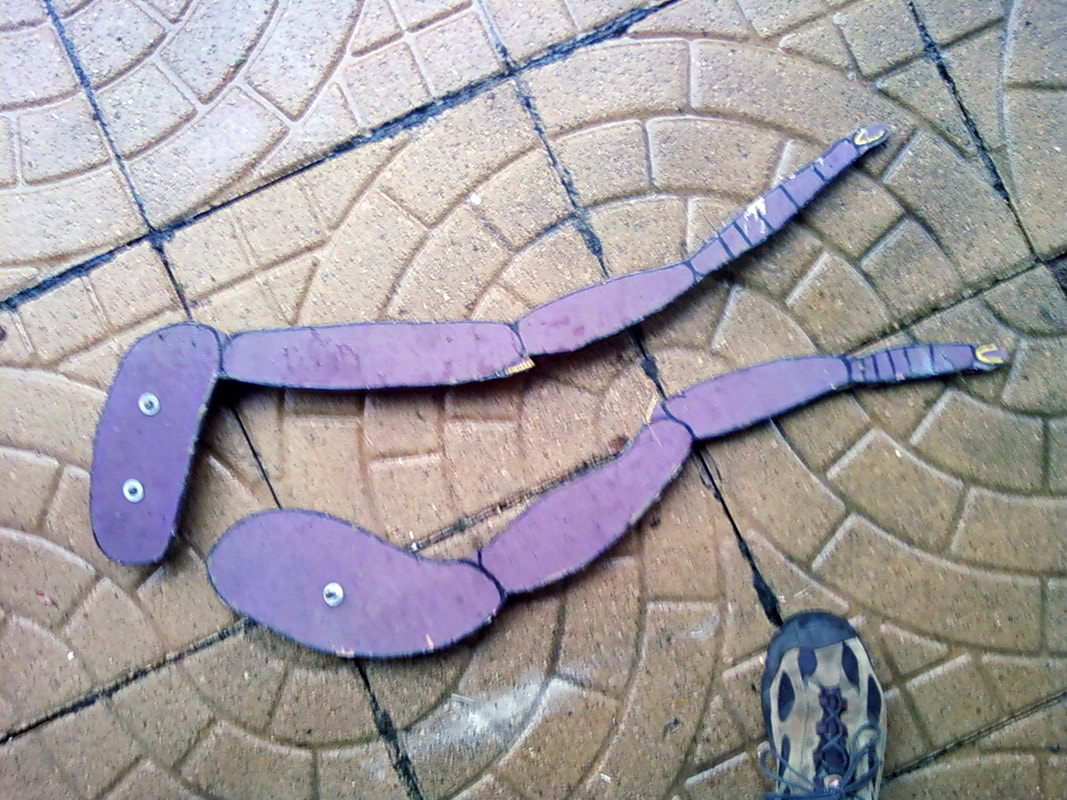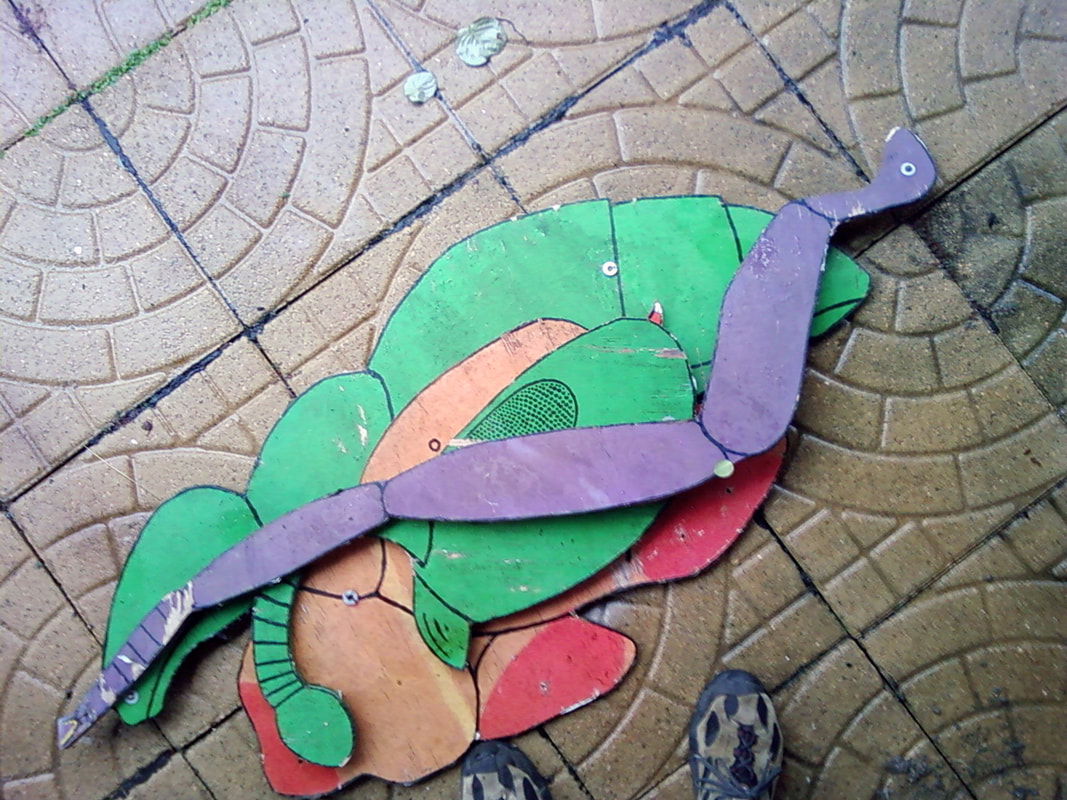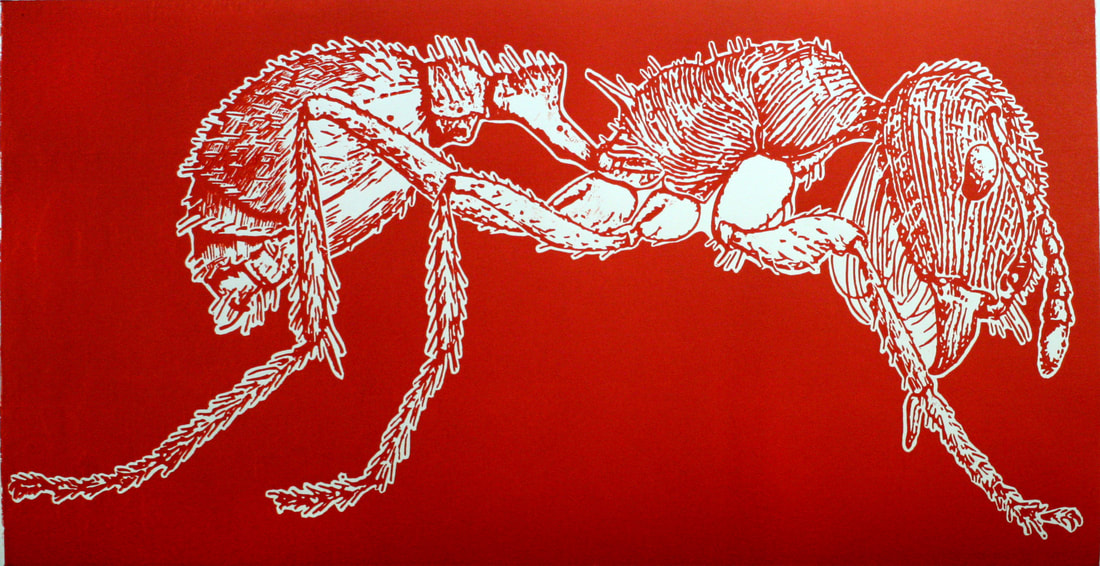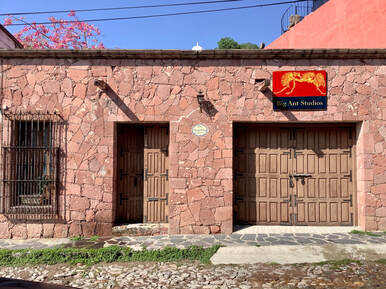Big Ant Studios
Biologists, especially those who work with mass phenomena, like geneticists, population biologists and ecologists, are mostly drawn to experimental models that can be found in a wide variety of habitats and environments. The rationale is that you don't want to spend a lot of research time looking for your organisms, and the search should yield a sampling population of perhaps thirty or so organisms. If you have to spend a lot of time looking for a study population, it is not suitable for a research protocol. Geneticists were at a standstill until the Pasadena Cal Tech group in 1910 under Thomas Hunt Morgan began working on Drosophila melanogaster, and now we know more about fruit flies than about most any other organism on earth. Botanists are drawn to the ubiquitous grasses, and entomologists everywhere can locate ants. They are an almost perfect subject. Colonies often have large numbers of workers and a sample can be drawn without affecting the survival of the colony as a whole. Ants are an almost perfect subject for biologists.
Pseudomyrmex gracilis
|
When I retired abruptly from a health crisis, I soon became confronted with a vacuum in my daily routine. I had always been interested in art, so I decided to take some art classes at the Houston Art League. The first project from the instructor, Patrick Palmer, was to construct a colorful sign or other piece for inclusion in the Westheimer Art Festival booth that we were to host in October 1995. We were given a 4' x 4' piece of plywood to do whatever we wanted, tools and paint were provided. Students were beginners, non-artists for the most part, so there was no pressure to produce a masterpiece. We were just having fun. In a week we were cutting the plywood, and my outlay was greeted with quizzical looks. Only when I assembled the six pieces could the outline of the nine foot ant be appreciated. At the festival we were one of the most colorful booths, and no project was bigger than my colorful Pseudomyrma gracilis.
|
She graced my kitchen wall for a decade before I moved her to the back porch where everybody could see her. She became a neighborhood landmark, and I gave directions to my apartment in reference to her, "Come to the end of Branard, and when you see the nine foot ant, that is my apartment, #12." As my art career progressed, it was natural to call my studio, "Big Ant Studios," the plural because I work in so many styles.
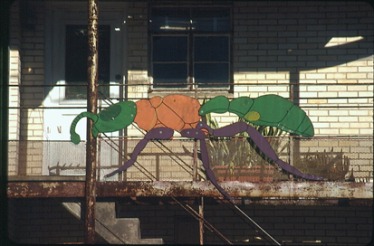
Big Ant at Wilshire Village Apartment Studio
When my life at Wilshire Village came to an end as the apartment complex was demolished, I moved to a much smaller apartment on Crocker Street near Montrose and West Gray. There was no room for the big ant, and the moldering parts came to rest outside on the patio, where their decomposition became complete.
Pogonomyrmex occidentalis
My professionalism increased as I continued to assist Suzanne Manns in the printmaking studio at the Glassell School, Museum of Fine Arts, Houston. I joined Print Matters, a guild of print artists. We conceived of a steamroller event where we would rent a steamroller and print large blocks in the street outside our headquarters on Main near McGowen. I carved a large block (24" x 49") with an ant design, Pogonomyrmex occidentalis, the harvester ant, and have printed and posted it in various public situations around Houston (see Street Art). It has become my logo and emblem.
Curriculum Vitae
Exhibitions:
Fund-raising donations:
Art Market Sales
Media:
Member :
- Bon Marché - Affordable print exhibition at Anne Street Galley, Safe Harbors of the Hudson, Newburgh, NY. June 1, 2017 - July 29, 2017.
- Glassell Student Exhibition, Glassell School, Museum of Fine Arts, Houston, 5101 Montrose Boulevard, Houston, TX, May 31 - July 7, 2013.
- Impressions 2013, Print Matters Membership Exhibition Show, Nos Caves Vin, 2501 Wroxton, Houston, TX, June 7, 2013 - August 2013.
- Steamrolled III: A Journey, prints steamrolled at Rockin' Rollin' Prints, St. Arnold's Brewery, 2000 Lyons Blvd., Houston, TX, showing at Peveto, A Fine Art Resource Management Company, 2627 Colquitt St, Houston, TX 77098, June 15 - July 6, 2013.
- Past & Present: Printmaking Student Exhibition 2013, Glassell School of Art, Museum of Fine Arts, Houston, May 20 - May 27 2013
- Photography Student Exhibition, Glassell School of Art, Museum of Fine Arts, Houston, Spring 2013.
- Print Matters, Houston - Membership Exhibition: October 18 - February 9, 2013, The Museum of Printing History 1324 W. Clay, Houston, TX; thence to Washington Printmakers Gallery, Pyramid Atlantic Art Center, 2nd Floor, 8230 Georgia Ave., Silver Spring, MD 20910 February 27 - March 30 2013 www.washingtonprintmakers.com; thence to The Louise Hopkins Underwood Center for the A Lubbock, TX, http://www.lhuca.org/current.html
- New Year's Eve Group Exhibition featuring Street Artists from Houston: BeHuman Gallery in CityCentre Town and Country area I-10 and Beltway 8, December 31–January 30, 2013 8:00–12 MIDNIGHT, 12848 Queensbury Suite 204, Houston, Texas 77024, http://www.behumangallery.com
- Annual Student Exhibition, Glassell School, Museum of Fine Arts, Houston: June 1 to July 22, 2012.
- Fact, Fiction and Interpretation: Recent work from Glassell Studio School Photographers, Museum of Fine Arts Glassell School, 5101 Montrose Boulevard, Houston, TX March 26 - April 15, 2012
- Houston Interpretations: Selections from the Glassell Studio School Works on Paper Department, Tradition Bank Gallery, 5020 Montrose Boulevard, Houston, TX January 30, 2012 - February 10 2012
- "One-of-a-Kind" Monoprints, monotypes & unique paper structures, Museum District Eye Center and Gallery, 4704 Montrose Boulevard, November 5, 2011 - April 5, 2012
- SAO Select: A Student/Alumni Organization Exhibition, Museum of Fine Arts, Houston Glassell School, Tradition Bank Gallery, 5020 Montrose Boulevard, Houston, TX, September 19–30, 2011
- Print Matters 2011, Hooks-Epstein Galleries, 2631 Colquitt Street, Houston, TX June 4 through July 1, 2011
- Steamrolled, Gallery M Squared, Houston, TX Saturday, July 11-12, 2011
- Greetings from Houston: Vintage Postcard Views of the City, a postcard and current view on exhibition from July 13, 2010 until October 3, 2010 at the Heritage Society, 1100 Bagby, Houston, TX 77002
- An Exhibition of Bookbinding in Houston, Heights Branch of the Houston Public Library, 1302 Heights Boulevard Houston, TX Summer 2009
- Texas Grassroots: Botanical Prints by David J Webb The Museum of Printing History, 1324 West Clay Street Houston, TX June - December 2008
- Eclectic Visions, an exhibition of Watercolorists and Printmakers, Manhattan CoffeeHouse, 1804 26th Street, Snyder, TX November 8, 2008 - December 31, 2008
- The Positive Art Workshop Exhibition, Museum of Fine Arts Glassell School, 5101 Montrose Boulevard, Houston, TX December 1 - 22, 2000
- Positive/Negative 2000: The Positive Art Workshop Exhibition, Museum of Fine Arts Glassell School, 5101 Montrose Boulevard, Houston, TX February 15, 2000 - March 2000
- Positive/Negative: Photographs by ArtAccess Students, Museum of Fine Arts Glassell School, 5101 Montrose Boulevard, Houston, TX February 9 - 21, 1999; Houston Lesbian and Gay Community Center, 803 Hawthorne, Houston, TX October 27, 1999 - January 10, 2000
Fund-raising donations:
- Museum of Fine Arts Annual Gala, 2012
- Museum of Printing History Annual Gala, 2011 and 2012
Art Market Sales
- MiStudio - San Antonio Art Market, exhibition and sale, San Miguel de Allende, GTO, Mexico. 2019, 2020, 2022.
- Winter Holiday Art Market, WHAM: in Winter Street Studios, Houston, TX. Annually since 2009-2017.
- It Came from the Bayou, annually in the Spring at St. Arnold's Brewery. Since 2017.
- Scond Saturdays at Sawyer Yards, a monthly art venue. Periodically since June 2017.
- Steamroller, an annual event in April at St Arnold Brewery, 2000 Lyons Blvd., Houston, TX. (Since 2017 superseded by It Came from the Bayou). A performance art piece in which up to 60 large blocks are printed from a steamroller, an all-day event open to the public. 2009-2016.
- Winter Holiday Art Market, Winter Street Studios, 2101 Winter Street, Houston, TX annually since 2007
- Glassell School Student Sale, Museum of Fine Arts Glassell School, 5101 Montrose Boulevard, Houston, TX annually 1998-2015.
- The Annual Winter Holiday Sale, Museum of Fine Arts Glassell School, 5101 Montrose Boulevard, Houston, TX December 2000-2006
- Arts of Freedom Festival, West Gray Multi-Service Center, 1475 W. Gray, Houston, TX July 31, 1999
- Disabilities Arts Festival, West Gray Multi-Service Center, 1475 W. Gray, Houston, TX July 25, 1998
Media:
- Great Day Houston with Debra Duncan on August 13, 2010 for Houston Time Portal postcards.
- WHAM at Winter Street Studios at Culture Map.
- VAA Visual Arts Alliance posts pictures of my work session on collagraph etchings.
Member :
- Printer's Guild at the Museum of Printing History [now the Printing Museum], a Houston organization of Letterpress enthusiasts.
- Print Matters, a Houston organization of printmakers.
- Volunteer: The Printing Museum, 1324 West Clay [3121 San Jacinto after summer 2022 relocation] (2009-2017) .
- Lab Assistant in Darkroom Photography at The Glassell School, Museum of Fine Arts, Houston. Until 2002-2015.
- Print Shop Monitor at The Glassell School, Museum of Fine Arts, Houston. 1998-2015.

